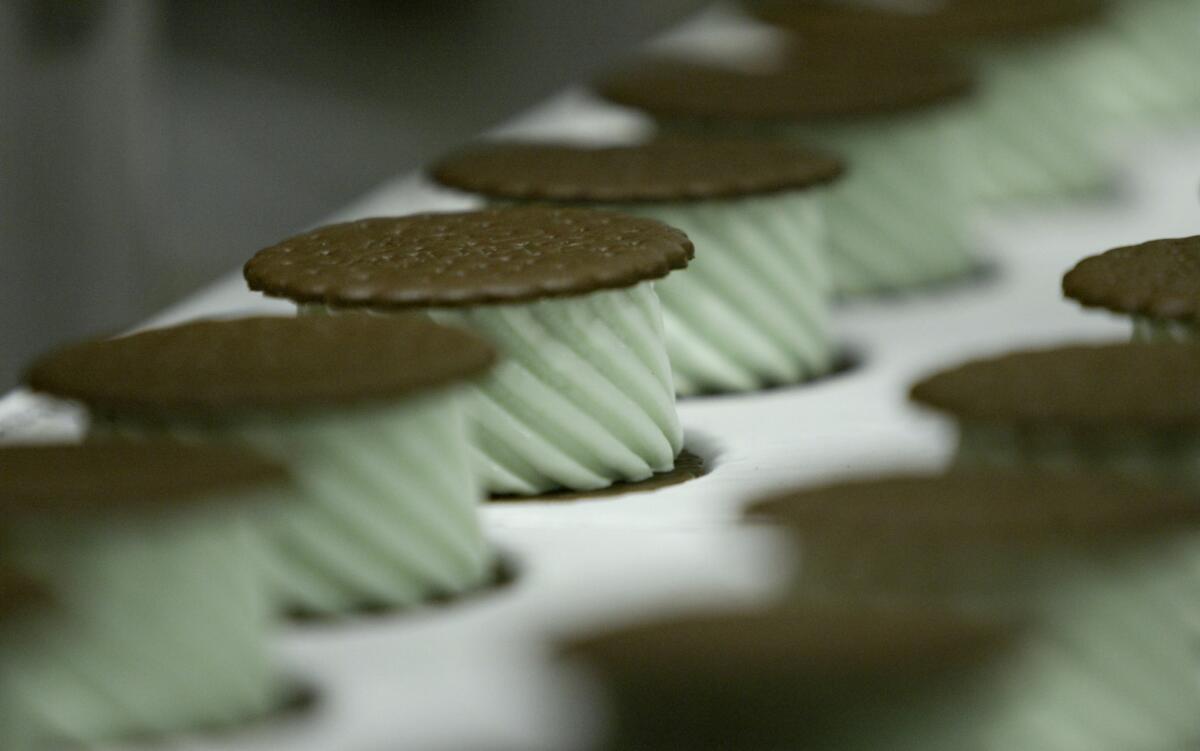Why a Walmart ice cream sandwich just won’t melt

- Share via
Ice cream is supposed to melt. When the frozen treat hits your tongue or gets a little too much sunshine, it’s supposed to turn into a sweet puddle. But one woman found her son’s ice cream sandwich just wouldn’t melt after it was left outside overnight.
Christie Watson told the Cincinnati news station WCPO that her son left a Walmart ice cream sandwich outside for 12 hours. Despite it being 80 degrees, the ice cream sandwich never fully melted.
“I thought it quite weird so I looked at the box and it doesn’t say artificial ice cream,” Watson told WCPO. “So I thought to myself, what am I feeding my children?”
The news station decided to conduct an ice cream melting experiment. A Walmart Great Value ice cream sandwich, a Klondike Bar ice cream sandwich and a cup of Haagen-Dazs were all left out in the sun for 30 minutes. The Walmart sandwich melted the least, while the Klondike sandwich was about two-thirds melted, and the Haagen-Dazs ice cream melted completely.
Walmart attempted to offer WCPO an explanation. “Ice cream melts based on the ingredients including cream,” said a Walmart representative. “Ice cream with more cream will generally melt at a slower rate, which is the case with our Great Value ice cream sandwiches.”
Turns out, Walmart is partially right. Sean O’Keefe, a food chemist at Virginia Tech, explained how fat can affect the rate at which an ice cream product will melt in a Washington Post article. According to O’Keefe, the amount of fat in ice cream helps determine how fast it melts. The less fat, and more water in ice cream, the slower it melts.
The Walmart ice cream also contains a number of ingredients used as stabilizers to help the ice cream keep its shape. They include guar gum and cellulose gum. According to a study by the Department of Food Science Technology at the Ohio State University on the effects of stabilizers and emulsifiers on melting resistance in ice cream, the more stabilizers in an ice cream, the slower it will melt.
Haagen-Dazs ice cream doesn’t contain any stabilizers, just cream, milk, sugar, eggs and vanilla.
An ice cream sandwich that doesn’t melt may not sound like the most appetizing of summer treats, but according to the U.S. Food and Drug Administration and the Center for Science in the Public Interest, the stabilizers cellulose gum and guar gum are both categorized as safe for consumption.
Twitter: @Jenn_Harris_
More to Read
Eat your way across L.A.
Get our weekly Tasting Notes newsletter for reviews, news and more.
You may occasionally receive promotional content from the Los Angeles Times.











